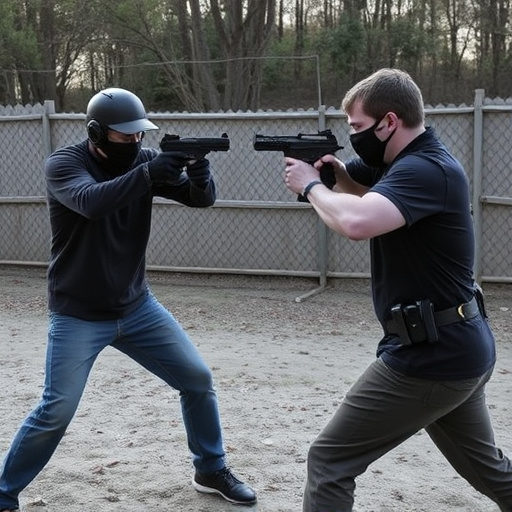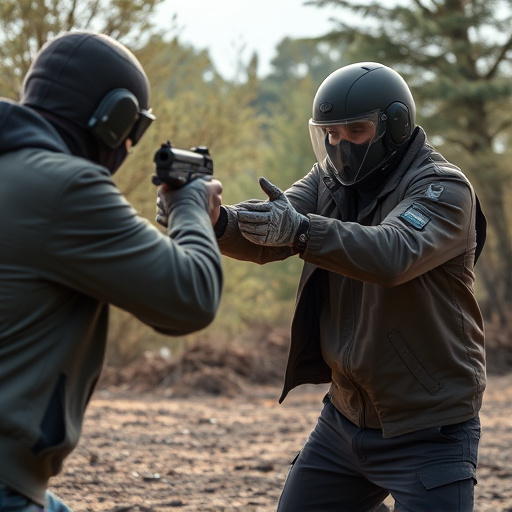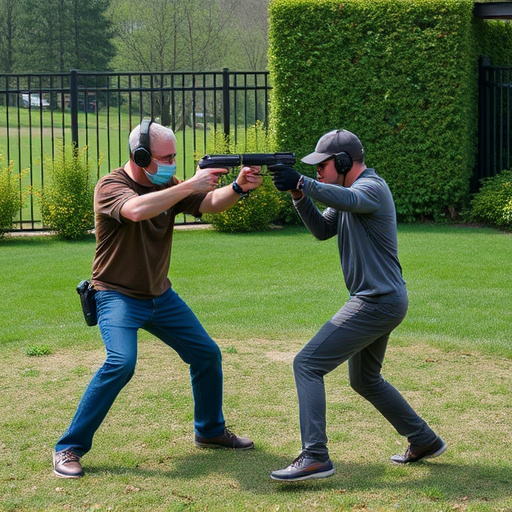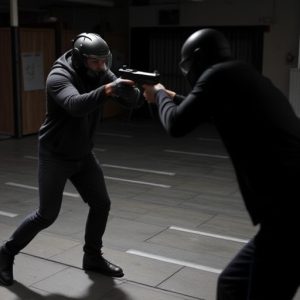Stun Gun Laws by State: Navigating Regulations for Safe Self-Defense
The legal status of stun guns varies greatly across US states, dictating permit requirements and use…….
The legal status of stun guns varies greatly across US states, dictating permit requirements and user restrictions. States with lenient laws allow open carry for personal protection, while stringent regulations restrict use to specific professions or situations. To ensure safe ownership, consumers should research local regulations and choose stun guns with advanced safety features like high voltage output, precise targeting, ergonomic design, smart triggers, auto shutoff mechanisms, and compact designs. Aligning preferences with state-specific laws is crucial for responsible usage and avoiding legal complications.
“Unraveling the legal landscape of stun guns, state by state, is essential for those seeking self-defense options. This comprehensive guide navigates the intricate web of regulations surrounding stun gun ownership and usage across the nation. From national perspectives to state-specific complexities, we explore the legal nuances, safe use exceptions, and key features that define responsible stun gun possession. Discover the states where stun guns are allowed, understand the best safety features, and learn how to navigate the legal roadmap for optimal protection.”
- Understanding Stun Gun Regulations: A National Overview
- Deciphering State-Specific Laws: The Complexities of Ownership
- The Legal Landscape: Which States Allow Stun Gun Possession?
- Exploring Safe Use and Self-Defense Exceptions
- Key Features to Consider in Stun Guns for Optimal Safety
- Navigating the Legal Roadmap: Tips for Responsible Ownership
Understanding Stun Gun Regulations: A National Overview

Stun guns, also known as electronic control devices (ECDs), are non-lethal weapons designed to incapacitate an assailant through electric shock. Understanding their legal status across different states in the US is essential for both law enforcement and civilian users. The regulations surrounding stun guns vary significantly from state to state, with some allowing their open carry while others restrict them to certain situations or require permits.
When considering the best safety features in stun guns, it’s crucial to be aware of these legal restrictions. Features like high voltage output, precise targeting, and ergonomic design are important for effectiveness and user safety. States with more lenient laws might encourage citizens to carry stun guns for personal protection, while those with stringent regulations often require their use to be limited to specific professions or situations, ensuring public safety and responsible usage.
Deciphering State-Specific Laws: The Complexities of Ownership

Deciphering State-Specific Laws: The Complexities of Ownership
Navigating the legal landscape surrounding stun guns involves understanding state-specific regulations, which can vary significantly across the United States. Owning a stun gun is not a universal right; it depends on where you call home. Each state has its own set of rules and restrictions, making it crucial for prospective owners to research thoroughly before making a purchase. These laws often delve into details like permit requirements, age restrictions, and even the type of stun device allowed. For instance, some states only permit stun guns while others may also include regulations on tasers or other electroshock weapons.
When considering the best safety features in stun guns, it’s equally important to align these with your state’s legal framework. Features like high voltage, pulse settings, and compact designs might be impressive, but they must adhere to local laws. Understanding these complexities ensures responsible ownership and helps avoid any legal repercussions. Remember, what is permissible in one state may not be in another, so being informed is key to a smooth experience.
The Legal Landscape: Which States Allow Stun Gun Possession?

In the United States, the legal status of stun guns varies significantly from state to state, shaping a diverse landscape for their possession and use. While some states embrace stun gun ownership as a viable personal safety option, others impose strict regulations or outright ban them. Understanding these restrictions is essential when considering purchasing a stun device for self-defense.
Currently, approximately 40 states allow the open carry or hidden carry of stun guns without a permit. These states often prioritize individual freedom and self-protection, reflecting a positive attitude towards stun gun possession. When evaluating stun guns within this legal framework, consumers should look for devices that incorporate advanced safety features. Top-tier stun guns come equipped with smart triggers, auto shutoff mechanisms, and compact designs, ensuring both effectiveness and responsible usage.
Exploring Safe Use and Self-Defense Exceptions

When it comes to exploring safe use and self-defense exceptions for stun guns, understanding state-specific legal restrictions is paramount. Each US state has its own set of guidelines governing the possession and usage of stun devices, focusing on ensuring public safety while acknowledging the right to self-defense. These laws often carve out specific scenarios where the use of a stun gun may be justified, especially for individuals facing imminent physical harm.
The best safety features in stun guns play a crucial role in these exceptions. States may allow their citizens to carry stun guns if they possess certain safety mechanisms designed to prevent accidental activation and ensure controlled deployment. Features like ergonomic designs, easy-to-use triggers, and built-in safety switches are often highlighted as essential components for legal self-defense use.
Key Features to Consider in Stun Guns for Optimal Safety

When choosing a stun gun for personal safety, several key features should be top of mind to ensure its effectiveness and your well-being. Firstly, look for models with adjustable voltage settings. This allows you to control the intensity of the shock, making it suitable for various situations and targets without causing excessive harm. Additionally, a low profile and compact design are essential for easy concealment, ensuring you can carry it discreetly for added peace of mind.
Another vital feature is a reliable activation mechanism. A simple, straightforward trigger design with a responsive switch guarantees swift deployment when needed. Moreover, consider models with built-in safety features like an automatic shut-off function after a few seconds to prevent overuse and accidental discharges. These best safety features in stun guns contribute to their overall performance and your security.
Navigating the Legal Roadmap: Tips for Responsible Ownership

Navigating the legal landscape surrounding stun guns is a crucial step for responsible ownership. Each state has its own set of regulations, making it essential to understand your rights and obligations before purchasing one. The best approach is to research the specific laws in your area, as restrictions can vary greatly from state to state. Some states allow open carry with a permit, while others limit stun guns to concealed carry or require registration.
When considering a stun gun, look for models that incorporate advanced safety features designed to minimize accidental activations and protect users from misuse. These features include motion-activated triggers, safety locks, and customizable settings to suit different situations. By staying informed about legal requirements and choosing a model with robust safety measures, you can ensure responsible ownership and maximize the benefits of your stun gun in terms of personal safety.
When navigating the legal landscape of stun gun ownership, understanding state-specific restrictions is paramount. This article has provided a comprehensive guide through the complexities of stun gun regulations, highlighting key features to look for in devices that prioritize best safety practices. Remember that while self-defense is a right, responsible ownership requires knowledge of local laws and the ethical use of force. By staying informed and prioritizing safety, you can ensure your peace of mind and protect yourself effectively.


